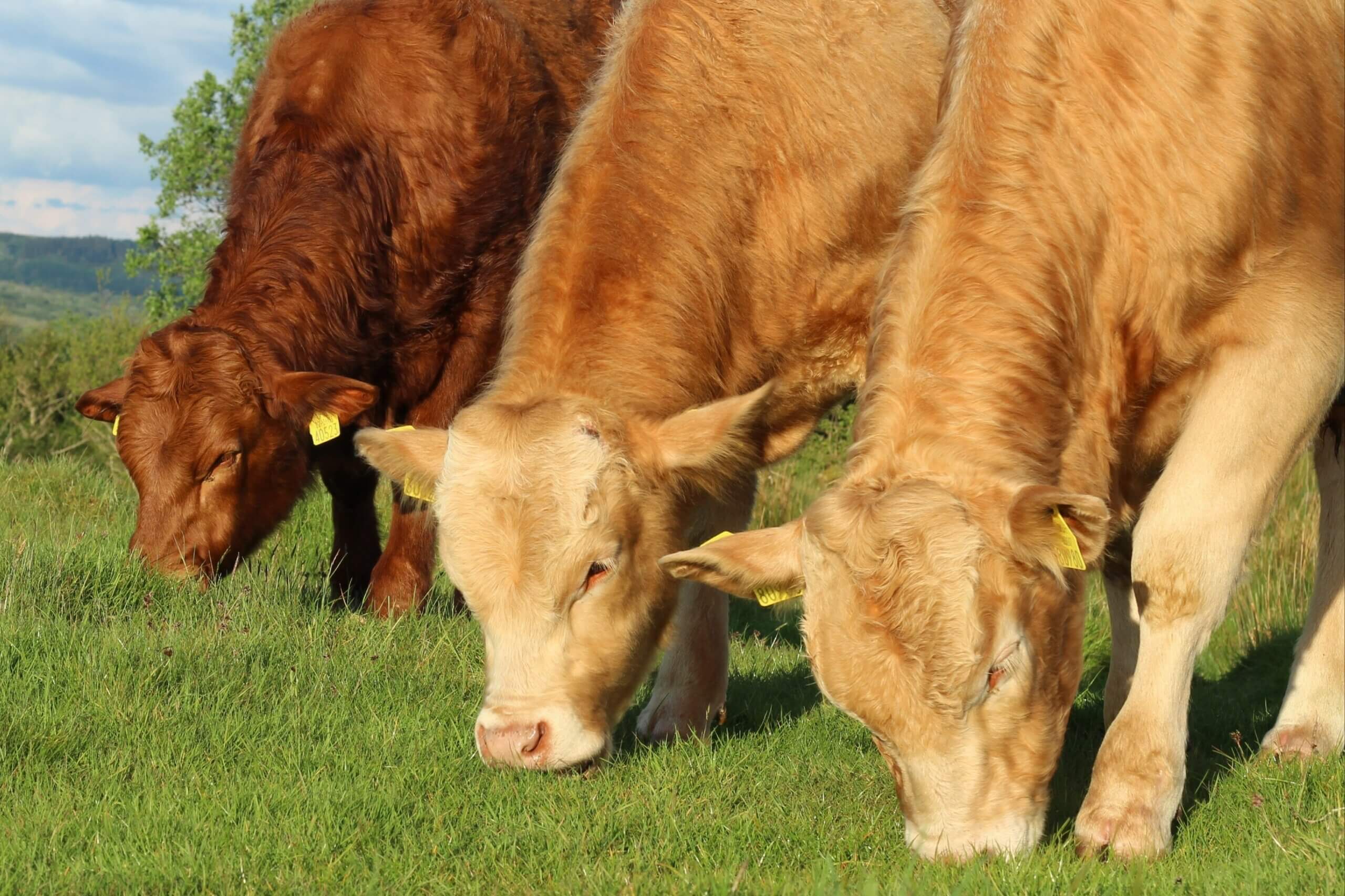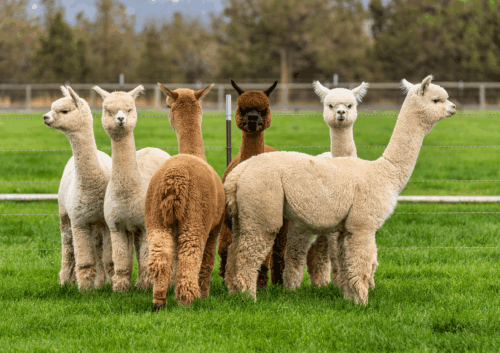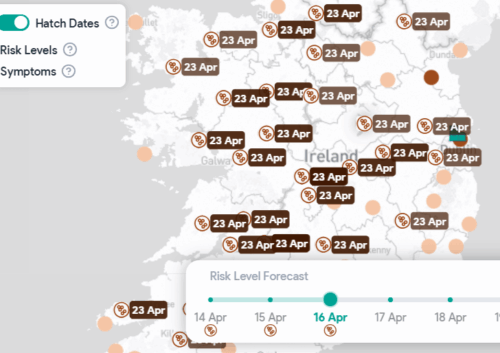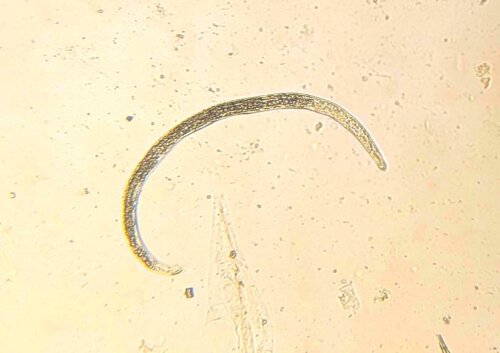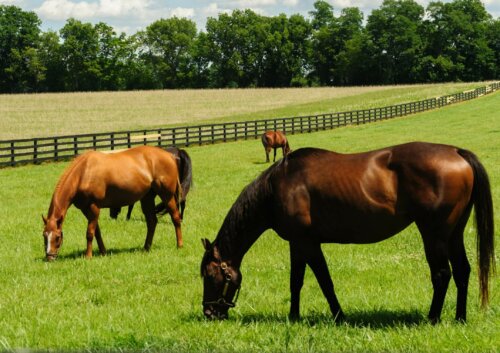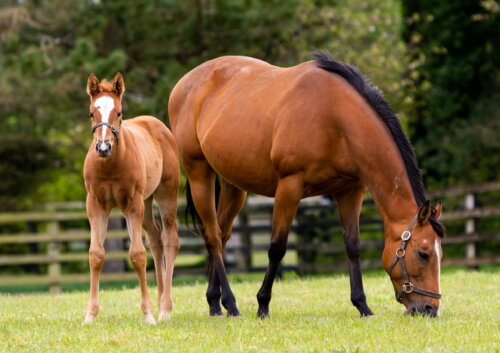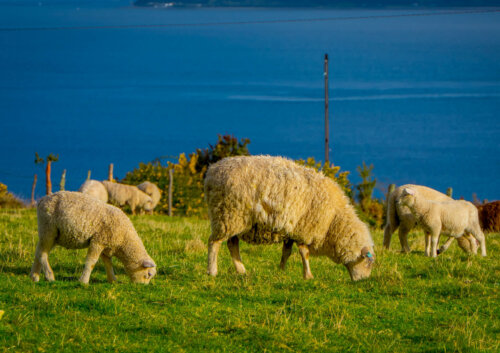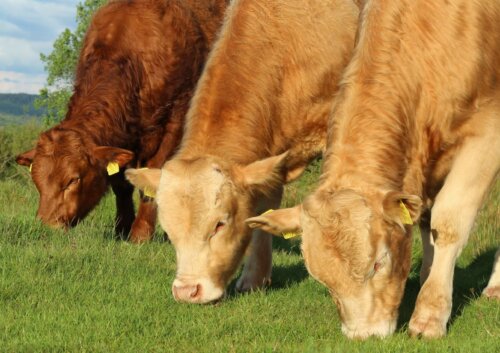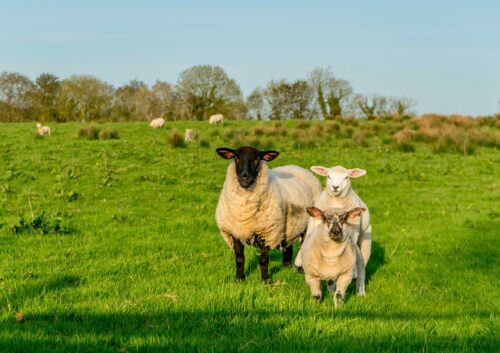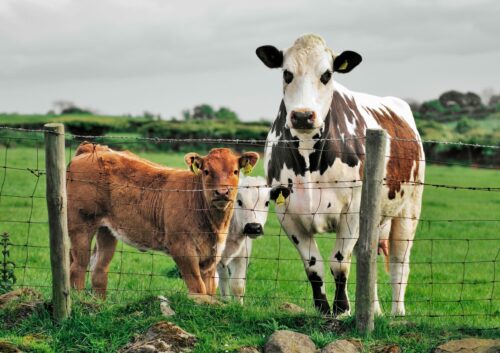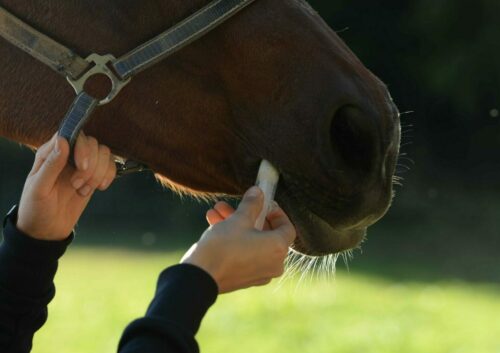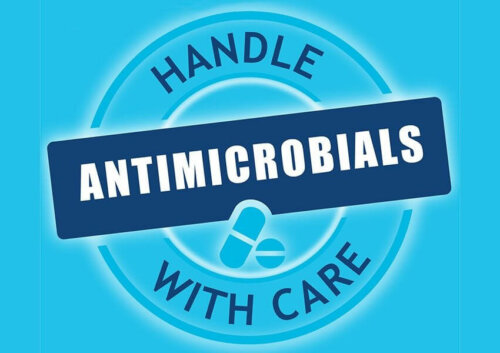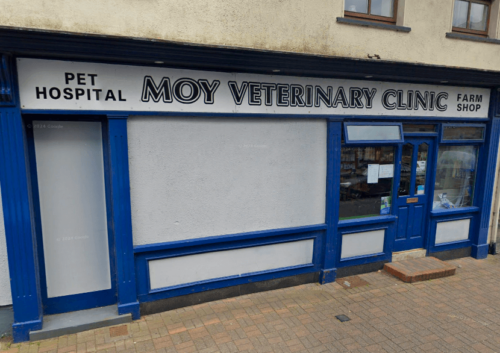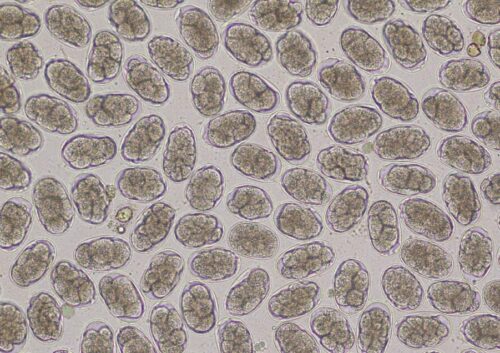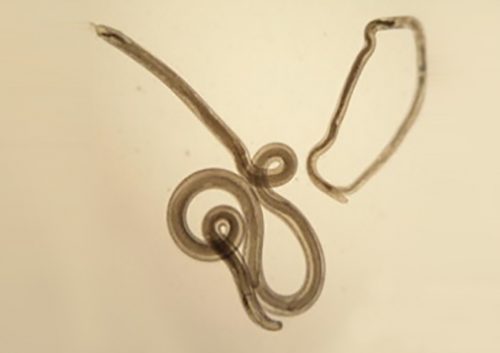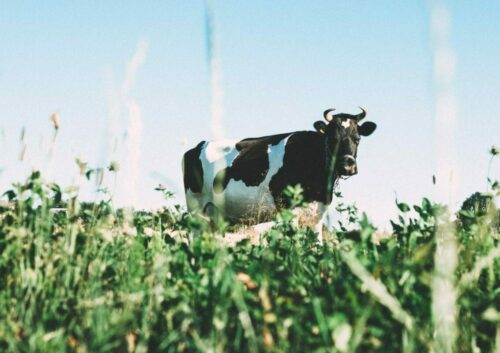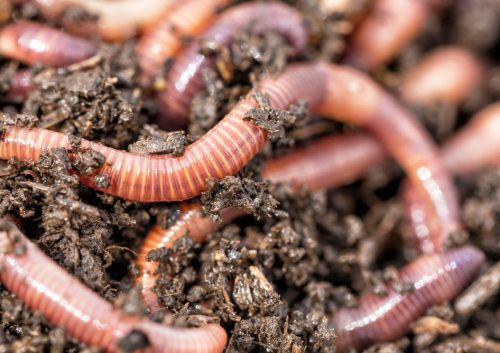To ensure the health of livestock on the farm, it is important to understand the parasitic treatments available and how to maintain them effectively. Gastrointestinal parasites that inhabit the digestive tract of livestock can result in many symptoms of illness and can be detrimental to weight gain, feed efficiency and productivity.
There are many ways to tackle the challenge of parasites, but the most common way to control them is through the use of anthelmintics.
Anthelmintics
Anthelmintics (also called drenches, wormers or parasiticides) are drugs used to treat worm infections. [2] The drench can be given to the animal through oral, injectable or pour-on methods. Studies have shown that all methods of administering the drenches cause resistance issues. However, pour-on methods appear to have less resistance issues due to their variable efficacy. There are five classes of drenches, differing in the way they work and their chemical structure. [2][11]
The five classes are:
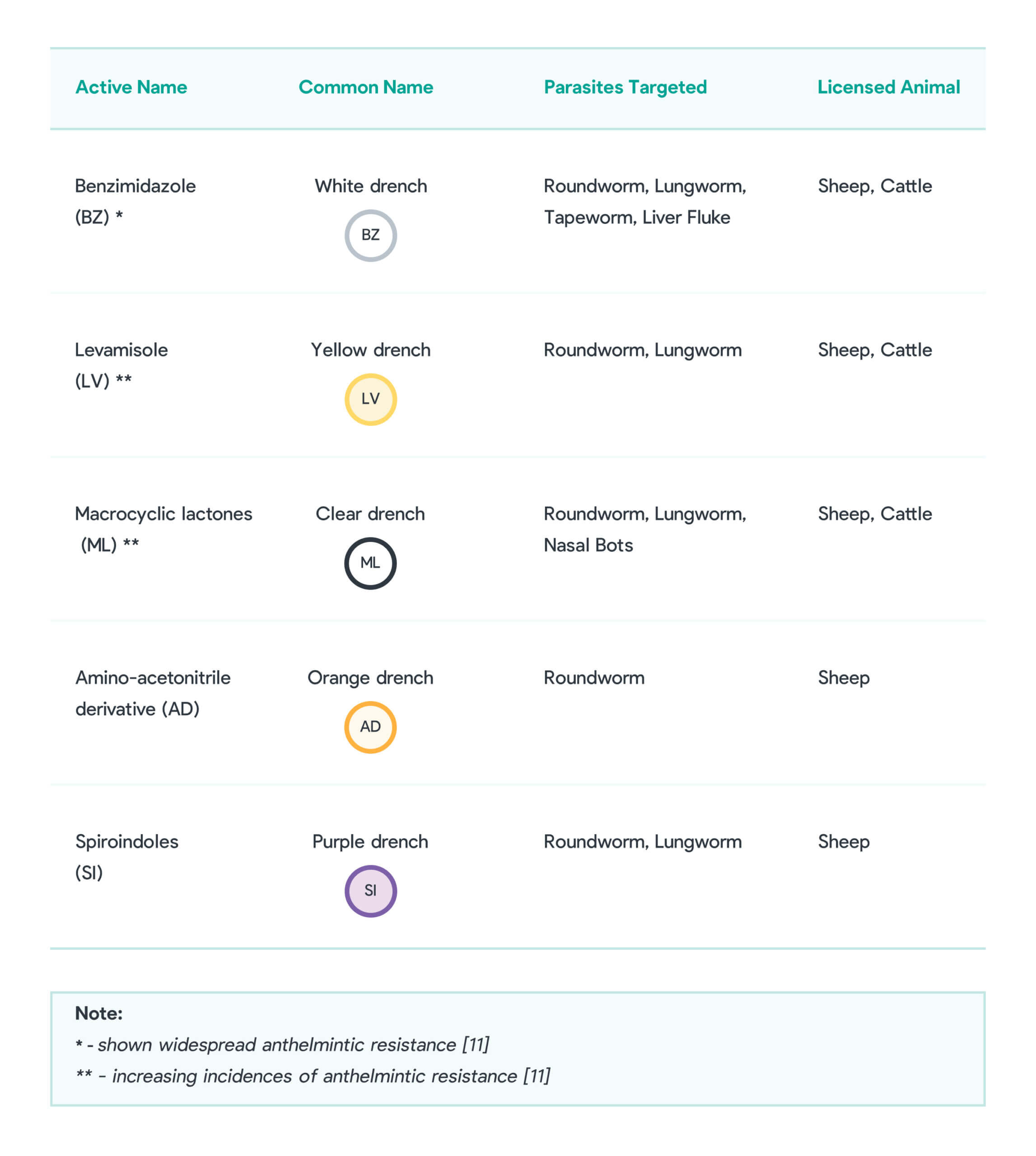
While drenches have been an effective method of killing parasitic worms found in livestock in the past, there are increasing reports of worms developing resistance to these actives due to persistent use over time. This is known as anthelmintic resistance.
Anthelmintic resistance
Anthelmintic resistance (AR) is the loss of sensitivity of the parasite to the anthelmintic drug that would typically kill the worm population. In studies, it has been shown that the growth of AR is evident in different parasitic worms and different classes of anthelmintic throughout various continents [7]. Understanding the mechanism of how resistance arises is of great importance. Research investigating the parasitic biology and the target of the drug have aided in understanding the mechanisms of resistance, providing valuable information to lessen the impacts by implementing cautionary measures.[2][7]
Reduce the Risk
Many actions can be taken to reduce the risk of resistance and ensure drenches are used effectively [3][4][5][6]
Care should be taken when choosing the type of anthelmintic to be prescribed.
The appropriate drenches should be considered to ensure efficacy against the target parasite and where it is in the life cycle. Proper dosing technique should be followed, including calibration of equipment and correct dosage for animal weight. Knowledge of farm and animal history can aid treatment decisions and prevent the overuse of a particular anthelmintic. [17][9]
How the pasture is managed when an influx has appeared.
A sufficient grassland and grazing management plan should be in place in accordance with season and livestock, to ensure high-risk pastures are considered during the risk assessments. Ensure treated animals do not move straight to a clean pasture before a wait period to prevent contamination of the new pasture. Rotational grazing as a pasture management strategy has been seen to contribute to the control of parasites by limiting exposure of the animals to the infective larval stage. [3][10]
Some protocols recommend maintaining the proportion of the worm population not exposed to anthelmintic treatment. This is known as refugia.[12] [13] Common strategies to enable this include:
- Deliberate low contamination of pastures before treatment
- Light reinfection of livestock from low contamination pastures
- Managing which animals to treat with targeted selective treatments
- Leaving approximately 10% of livestock untreated. [13]

To ensure quarantine of new livestock to prevent contamination.
New livestock should be treated and housed away from the cohort, to allow any contamination of resistant parasites to be passed through the gastrointestinal tract before introducing to the cohort. [5]
Perform drench testing.
Drench testing, also referred to as Faecal Egg Count Reduction Testing (FECRT), is an easy way to test the effectiveness of drenches in animals. This test involves the comparison of a faecal egg count (FEC) of a sample group before and after treatment. The initial FEC quantifies the severity of the parasitic infection before treatment with anthelmintics. The post-treatment FEC is carried out using a sample collected a set number of days after the worming dose has been administered. The efficacy of the drench is determined by a reduction in the egg burden between the two tests. There are many criteria required to ensure accuracy is achieved in this procedure. [4]
Drug rotation.
It is important to avoid frequent and repeated overuse of the same anthelmintic active ingredient as the parasites can become resistant to classes of anthelmintics. The use of a combination of anthelmintics, which allows for the target of different parasites using different methods of action, has previously been recommended to ensure the target is achieved. While rotation of anthelmintic groups was once used as a delay method, due to the widespread resistance of Benzimidazole and the increasing presence of resistance in Levamisole and Macrocyclic lactones, this rotation is now likely to be ineffective. [11]
Feed supplementation.
The effects of livestock nutrition can aid in the resistance and resilience of parasitic infection. The effects are related to the feed supplementation as well as pastures. For pastures, studies show that a multi-species sward has shown a lower parasite burden than a single species. It is recommended that sward heights are no less than 3 to 4 cm for grazing to avoid the ingestion of infected larvae [16]. Providing feed supplements, such as protein rich supplements high in digestible ungraded proteins, have been seen to reduce the parasitic burden in livestock [15]. Supplementation of trace minerals has also been found to aid in regulating resistance. Deficiency in trace minerals such as phosphorus and cobalt can leave livestock, such as sheep, with a susceptibility to worm infection [14]. All supplementation should be discussed with an advisor to ensure no complex interactions occur.
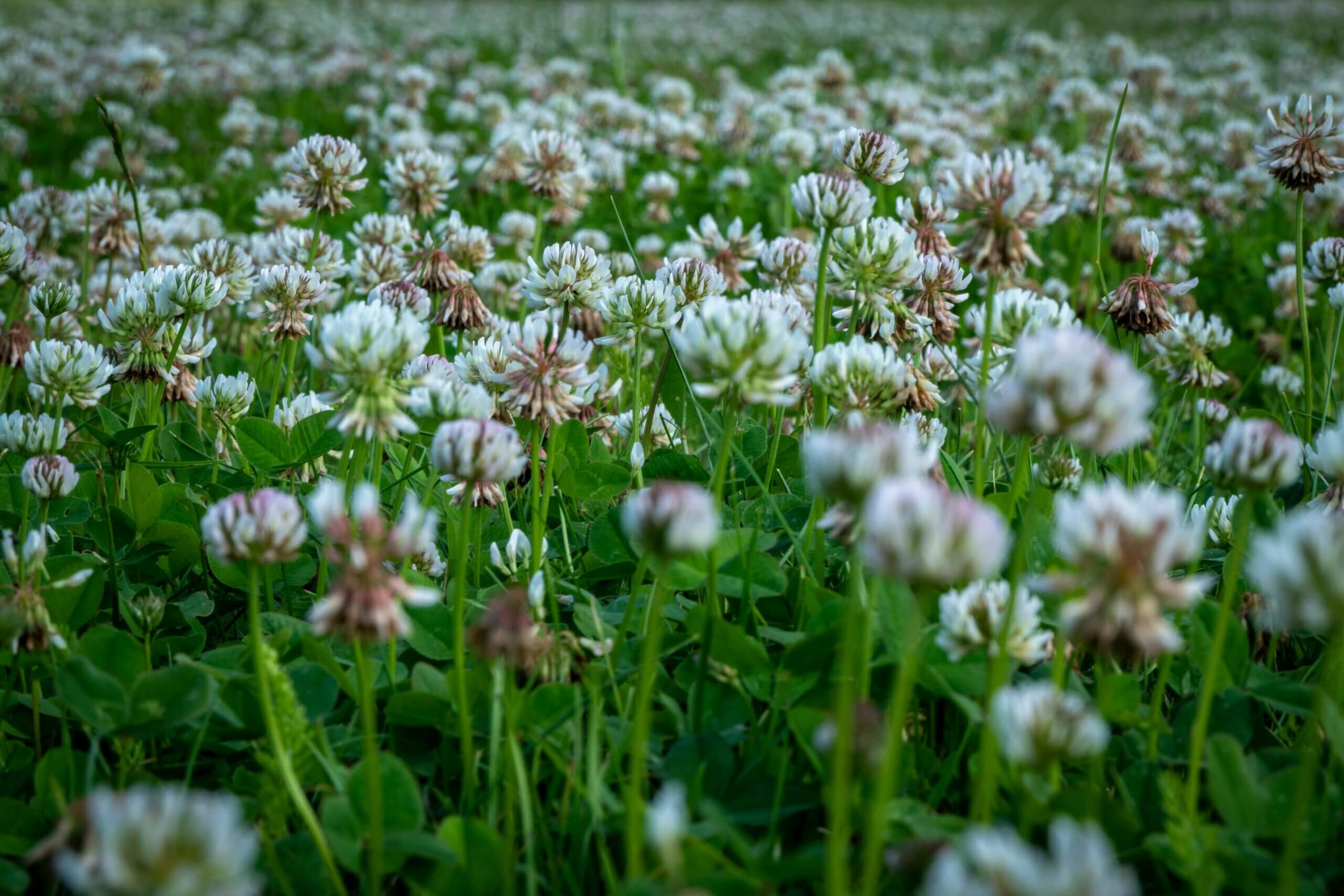


Tackling the challenge of parasites in livestock is very important. It is important to remember, the careful choice of anthelmintic, maintenance of pasture and ensuring quarantine of new livestock is being monitored, aid in the reduction of parasites in the livestock. Other methods including performing drench testing, drug rotation and feed supplementation are also recommended. Through these maintenance and preventative measures, the efficient health of the livestock can be achieved.
References
[1] Dasenaki, Marilena & Kritikou, Anastasia & Thomaidis, Nikolaos 2023, Meat safety: II Residues and contaminants. 10.1016/B978-0-323-85408-5.00007-8. [Internet]. [cited 2024 May 16 ] Available from: https://www.researchgate.net/publication/363431999_Meat_safety_II_Residues_and_contaminants
[2] Animal Health Ireland 2021, Parasite control – good practice in responsible use of anthelmintic medicines [Internet]. [cited 2024 May 17] Available from: https://animalhealthireland.ie/assets/uploads/2021/04/AHI-Parasite-Control-Good-Practice-in-responsible-use-of-Anthelmintic-Medicines-2021.pdf?dl=1
[3] Teagasc 2021, Understanding pasture contamination and its implications for management, Teagasc. [Internet]. [cited 2024 May 17] Available from: https://www.teagasc.ie/news–events/daily/sheep/understanding-pasture-contamination-and-its-implications-for-management.php
[4] Teagasc 2022, How to check if your worm dose is effective, Teagasc. [Internet]. [cited 2024 May 16] Available from: https://www.teagasc.ie/news–events/daily/sheep/how-to-check-if-your-worm-dose-is-effective.php
[5] Teagasc 2023, Control and treatment of stomach worms in sheep, Teagasc. [Internet]. [cited 2024 May 17] Available from: https://www.teagasc.ie/news–events/daily/sheep/control-and-treatment-of-stomach-worms-in-sheep.php
[6] Teagasc, Control of internal parasites in calves, Teagasc. [Internet]. [cited 2024 May 28] Available from: https://www.teagasc.ie/publications/2017/control-of-internal-parasites-in-calves.php
[7] Baiak BHB, Lehnen CR, Rocha RA 2018, Anthelmintic resistance in cattle: a systematic review and meta-analysis. Livest Sci. 2018;217:127–135. doi:10.1016/j.livsci.2018.09.022 [Internet]. [cited 2024 May 17] Available from: https://www2.uepg.br/biomodel/wp-content/uploads/sites/27/2020/03/Baiak_ls_2018.pdf
[9] Jabbar A, Iqbal Z, Kerboeuf D, Muhammad G, Khan N, Afaq M. Anthelmintic resistance: the state of play revisited. Life Sci. 2006;79(26):2413–2431. doi:10.1016/j.lfs.2006.08.01016979192 [Internet]. [cited 2024 May 28] Available from: https://www.tandfonline.com/doi/full/10.2147/IDR.S332378
[10] Animal Health Ireland 2021, A Guide to Parasite Control at Turn-out [Internet]. [cited 2024 May 24] Available from: https://animalhealthireland.ie/assets/uploads/2021/06/PC-Parasite-Control-Turn-Out-2021.pdf?dl=1
[11] SCOPS, Selecting the appropriate anthelmintic [Internet]. [cited 2024 May 28] Available from: https://www.scops.org.uk/workspace/pdfs/2-5-selecting-the-appropriate-anthelmintic_1.pdf
[12] SCOPS, Resistance selection mechanisms [Internet]. [cited 2024 May 28] Available from: https://www.scops.org.uk/workspace/pdfs/1-3_resistance_selection_mechanisms_1.pdf
[13] SCOPS, Preserve susceptible worms [Internet]. [cited 2024 May 28] Available from: https://www.scops.org.uk/workspace/pdfs/2-2-preserve-susceptible-worms.pdf
[14] Wormboss, Nutrition for Resistance and Resilience to Worms – Sheep [Internet]. [cited 2024 May 28] Available from: https://wormboss.com.au/tests-tools/nutrition-for-resistance-and-resilience-to-worms-sheep/#:~:text=Feeding%20protein%2Drich%20supplements%20such,or%20more)%20of%20bypass%20proteins.
[15] SCOPS 2012, Parasites technical manual 4th edition [Internet]. [cited 2024 May 28] Available from: https://www.scops.org.uk/workspace/pdfs/internal-parasites-technical-manual-4th-edition-do-not-use-as-updated-version-online.pdf
[16] AHDB Beef & Lamb, Hybu Cig Cymru and Quality Meat Scotland, Worm control in sheep [Internet]. [cited 2024 May 28] Available from: https://meatpromotion.wales/images/resources/Worm_Control_in_Sheep_09-17_+notes_cropped.pdf
[17] SCOPS Administer Anthelmintics Effectively [Internet]. [cited 2024 May 28] Available from: https://www.scops.org.uk/workspace/pdfs/2-1-administer-anthelmintics-effectively_1.pdf
